Cognitive Revelations: Insights for Growth and Learning
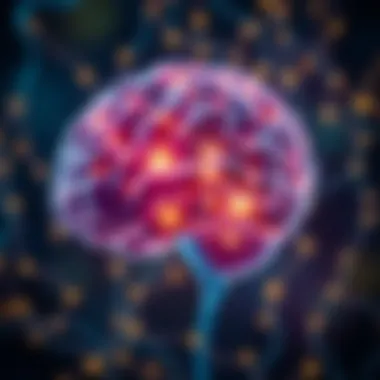
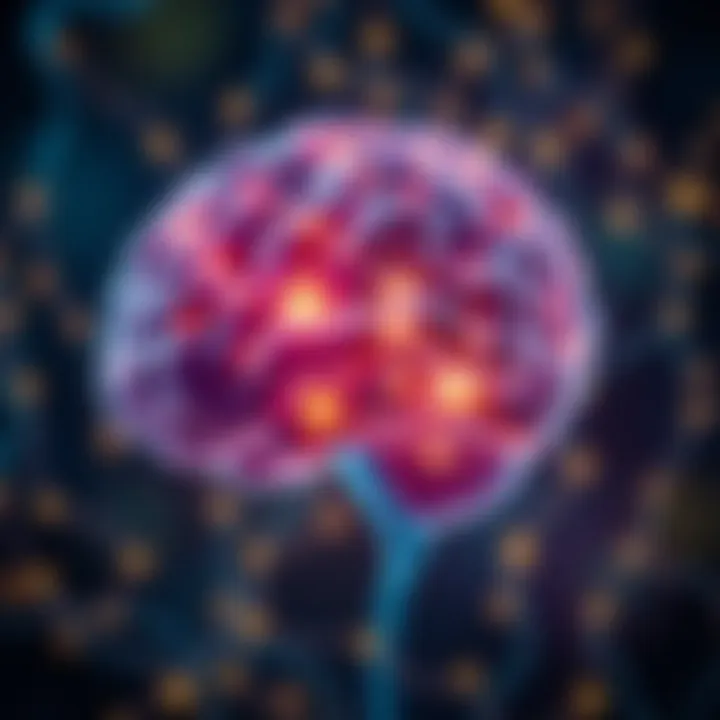
Intro
Cognitive insights often strike like lightning, illuminating paths that were previously obscured. These moments of profound understanding can be the catalysts for significant change in a person's life, leading to personal growth, improved decision-making, and an enhanced sense of purpose. But what exactly is insight, and how does it differ from regular problem-solving? Insight can be described as a sudden realization—a mental awakening where the pieces of a puzzle fall into place without the tedious work often associated with analytical reasoning.
In this section, we’ll chart the landscape of cognitive revelations, examining the workings of the mind when it grasps a concept in a novel way. We’ll also take a closer look at how these revelations can be applied, not only in academic and professional settings but in everyday life.
Drawing from a variety of sources and research, we’ll explore neurological foundations, real-world applications, and practical strategies to cultivate an insightful mindset. Thus, this exploration will lay the groundwork for understanding how we can harness insight to navigate the complexities of life, both personally and professionally.
Understanding Insight
Understanding insight is essential to grasping how these moments of clarity influence our lives and learning. Insight is not merely a flash of inspiration; it’s often a product of deep cognitive processing. In this article, we aim to dissect the concept of insight, revealing its layers and implications. By comprehending what insight is, we can better appreciate its role in improving decision-making, enhancing creativity, and fostering personal growth.
Many people experience "aha!" moments, where the solution to a problem or the understanding of a concept suddenly crystalizes. This spark can be a guide, illuminating the path to innovative solutions or techniques for personal development. Insight is like a compass in uncharted waters; it provides direction when one might feel lost.
Moreover, acknowledging the various types of insight—whether intuitive, analytical, or creative—allows individuals to apply the most suitable approach based on their circumstances. Understanding these distinctions helps to tailor methods for cultivating insight, ensuring one can harness it effectively whenever needed. As we delve deeper into the nuances of insight, its historical perspectives, and its diverse forms, the goal is to dismantle the idea that insight is spontaneous or random. Instead, we’ll unpack how different strategies can nurture and enhance our cognitive abilities, leading to transformative revelations that empower both personal and professional advancement.
The Neuroscience of Insight
When we delve into the realm of insight, it is crucial to understand how our brain processes these moments of clarity. The neuroscience of insight unveils the intricate interplay of brain activity that gives rise to these profound revelations. By dissecting the neural mechanisms, we gain valuable understanding not only about how insights emerge but also about enhancing cognitive abilities like problem-solving, creativity, and adaptability. The relevance of this topic extends beyond mere academic exploration; it lays the foundation for practical applications in education, professional development, and personal growth.
Brain Structures Involved in Insight
Frontal Cortex
The frontal cortex plays a central role in higher-order cognitive functions, including insight formation. This area is especially known for its involvement in executive functions, which encompass planning, decision-making, and problem-solving. During moments of insight, the frontal cortex reaches a heightened level of activity, suggesting its critical role in facilitating new information synthesis. This characteristic of the frontal cortex makes it a suitable focus within this article since insights often require the integration of disparate ideas.
Moreover, a unique feature of the frontal cortex is its ability to engage in metacognition, or thinking about thinking. This allows individuals to reflect upon their thought processes, contributing to deeper understanding and insight. However, the downsides may include the potential for overwhelming complexity, which could hinder one’s ability to derive straightforward conclusions.
Temporal Lobes
The temporal lobes are another key player, involved in social cognition and the comprehension of language. Insights often draw on past experiences and knowledge—areas notably governed by the temporal lobes. A standout characteristic here is the ability to create associative links between different concepts, which is essential in generating insight.
The temporal lobes uniquely contribute to storing long-term memory, helping one access relevant information, which facilitates insight. While braaain regions often work in isolation, the temporal lobes encourage collaboration with other parts of the brain, such as the frontal cortex, further enhancing the potential for insightful revelations. The challenge remains, however, as individuals may sometimes rely too heavily on past experiences, inadvertently limiting innovative or unconventional insights.
Right Hemisphere Functions
The right hemisphere of the brain is often associated with creativity and holistic thinking. This side promotes the ability to synthesize information from various sources while nudging individuals toward seeing the bigger picture. As insights often stem from the ability to think outside the box, the right hemisphere's functions become a vital aspect of understanding cognitive revelations.
A key characteristic of the right hemisphere is its focus on non-verbal cues and emotional context, which allows for deeper connections and richer insights. The accessibility of broader picture thinking from this area offers tremendous advantages in creative settings when generating new ideas. Yet, the trade-off can be a neglect of detail, leading to gaps in comprehension when insight is intricately required.
Neural Pathways and Insight Formation
Insight does not simply appear out of thin air; rather, it emerges from the establishment of neural pathways formed through repeated experiences and learning. The dynamic patterns created in our brains dictate how efficiently we navigate complex ideas. Identifying how these pathways evolve is foundational in understanding the insight formation process. The more we engage with a challenge, the stronger these neural connections become, thereby enhancing our capacity for insight over time.
Cognitive Processes Underlying Insight
Problem Solving
Understanding problem-solving as a driving force behind insight is critical. Effective problem-solving techniques often lead to innovative thinking and unearth novel solutions. Highlighting divergent thinking—a process where many possible solutions are generated—unlocks potential insights. The beauty of problem-solving lies in its iterative nature, where persistence pays off after numerous attempts. However, a downside arises when individuals apply rote techniques, stifling creativity in generating insights.
Pattern Recognition
Pattern recognition serves as another foundation for cognitive processes that lead to insight. This cognitive ability allows us to detect trends or similarities, guiding our thought processes. The significance of pattern recognition is profound, as it forms the basis for anticipating future scenarios based on past events. In this context, it cultivates a fertile ground for insights to blossom. However, the reliance on established patterns can sometimes hinder original thought, trapping minds within familiar frameworks.
Conceptual Change
Finally, conceptual change plays a pivotal role in fostering insight. It refers to the transformation of one's understanding and perspectives about a topic. When faced with new evidence or experiences that contradict prior beliefs, a fundamental shift in thinking occurs. This softening of old convictions allows fresh insights to emerge. However, the challenge lies in confronting cognitive dissonance—this discomfort can deter individuals from making necessary changes to their understanding, thereby creating barriers to insight.
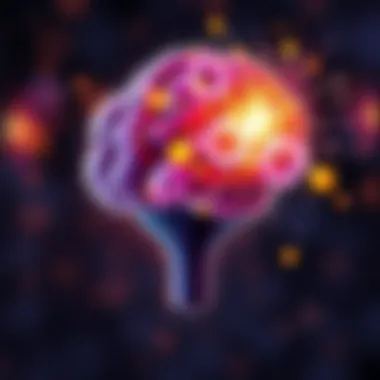
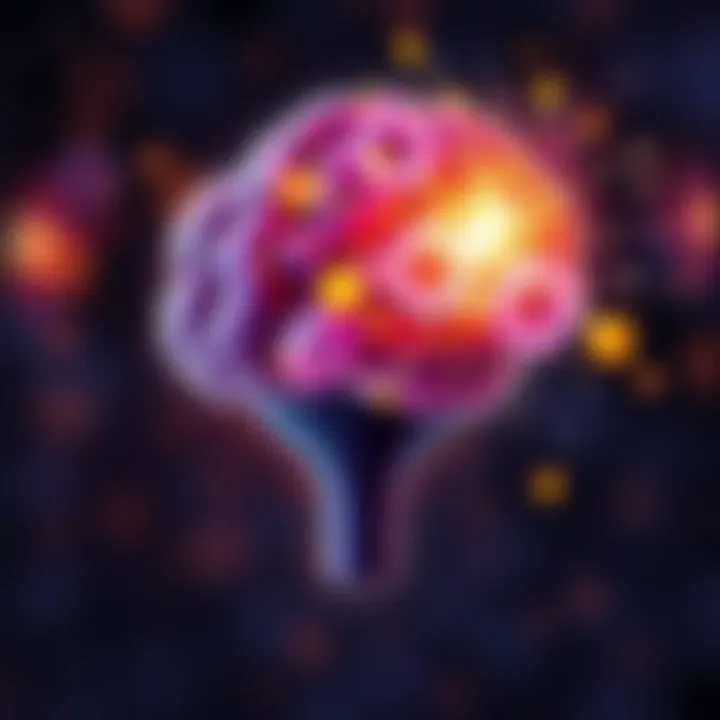
The Role of Environment in Fostering Insight
The environment where one engages in thought processes is more than just a backdrop; it profoundly shapes the quality and type of insights one can achieve. From our physical surroundings to the social networks we cultivate, the role of environment in fostering insight cannot be overstated. It acts as both a catalyst and a barrier to cognitive revelations, influencing creativity, collaboration, and clarity of thought.
Creative Spaces and Innovation
Creative spaces are crucial for promoting innovative thinking and sparking insights. These environments can be both physical and conceptual. Imagine a brightly lit room filled with greenery, comfortable seating, and an atmosphere that encourages freedom of expression. These factors help stimulate brain activity, which is essential for insight generation.
- Design Elements: A well-designed space can facilitate brainstorming and creativity. Open layouts, access to nature, and inspiring artwork create a more inviting atmosphere conducive to open-ended discussions.
- Resource Availability: Having tools, materials, and technology easily accessible enables individuals to explore ideas more freely. For instance, a workshop equipped with art supplies and prototyping tools allows for hands-on experimentation.
- Diversity of Thought: Bringing together people from various disciplines encourages cross-pollination of ideas. Creative spaces that invite a range of perspectives can lead to surprising and enlightening insights.
The mix of these elements often results in breakthrough moments, where insights suddenly crystallize, leading to innovative solutions or artistic expressions.
Collaboration and Insight Generation
The act of collaborating with others can significantly enhance the likelihood of achieving insight. When individuals work together, they share experiences and techniques, allowing for a richer exploration of concepts.
- Meeting of Minds: Collaborative environments enable diverse viewpoints to merge. Engaging in conversations that challenge assumptions can ignite cognitive sparks that one might not experience when working in isolation.
- Feedback Loops: Collaboration provides a mechanism for immediate feedback. Sharing ideas and receiving constructive critiques can help refine thoughts and reveal angles that were previously overlooked.
- Shared Knowledge and Skills: Collaborating with others who possess different expertise can fill gaps in understanding and stimulate new ideas. For example, a scientist working with an artist may uncover fresh pathways for communicating scientific concepts.
Creating a culture that promotes collaboration across different sectors leads to a fertile ground for insights and innovative thinking.
Distractions and Mental Clarity
While environments can encourage insight, they can equally impede cognitive clarity through distractions. Understanding distractions and how to minimize their impact can significantly enhance the capacity for insightful thinking.
- Types of Distractions: External distractions, such as noise and movement in the environment, can disrupt focus. Internal distractions, like stress or anxiety, also cloud the mind, making it challenging to gain clarity of thought.
- Creating Calm: Establishing routines and spaces that minimize distractions fosters a clearer mental state. Techniques such as designated quiet times or 'focus zones' can help individuals achieve the mental clarity needed for insight.
- Digital Detox: In today's hyper-connected world, the influence of technology cannot be ignored. Setting aside time away from screens and notifications can refresh the mind, allowing for deeper reflection and thought.
Striking a balance between stimulation and calm enables individuals to harness their cognitive power more effectively, making it easier to experience those illuminating moments of insight.
"The right environment can make the difference between a spark of an idea and a flaming insight."
Insight in Learning and Education
Insight plays a crucial role in the realm of learning and education. It serves not just as a tool for students but also as a means for educators to improve their teaching methodologies. When students grasp concepts at a fundamental level rather than through rote memorization, they develop a depth of understanding that can be transformative. Moreover, fostering an insight-rich educational environment paves the way for lifelong learners who can adapt their knowledge to various contexts.
Cultivating Insightful Learning Environments
Creating nurturing environments for insight involves more than just changing physical spaces. It requires a thoughtful approach to activities and interactions that evoke curiosity and self-discovery. Educators should prioritize collaboration and allow room for inquiry-based exploration, which can result in those lightbulb moments where understanding clicks. When students feel comfortable expressing their ideas and thoughts, they’re more likely to encounter insights that can bud into deeper learning.
The Impact of Insight on Academic Success
The relationship between insight and academic success cannot be overstated. Students who experience moments of insight often retain information longer and apply their knowledge in more innovative ways. Such revelations can instil confidence, motivating them to tackle more complex subjects. In contrast, a traditional approach relying solely on memorization can stunt creativity and discourage critical thinking. Thus, leveraging insight translates not just to better grades, but also to an enriched educational journey.
Teaching Strategies to Enhance Insight
Encouraging Reflection
Encouraging reflection is a key strategy to enhance insight in learning. When students take time to ponder their experiences, they connect new information with prior knowledge, leading to deeper insights. This practice allows learners to assess their thoughts critically, creating personal relevance and application of concepts. The beauty of encouraging reflection lies in its simplicity; it requires minimal resources yet can significantly enhance one's learning experience. However, it might be challenging for some students, especially if they are not used to thinking deeply about their learning processes.
Problem-Based Learning
Problem-based learning is another dynamic method that fosters insight. This approach places students in real-world situations, pushing them to identify solutions actively. The core characteristic of this strategy is its focus on students' engagement in solving authentic problems, which can lead to those eureka moments. By immersing students in complex challenges, they start to see learning as an active, interactive process. The downside could be that some students may initially struggle with open-ended problems, but with adequate support, they can recalibrate their thinking and thrive.
Interdisciplinary Approaches
Interdisciplinary approaches allow students to see the interconnectedness of various fields, enriching their insights. By integrating different subjects, learners gain a more holistic perspective, which often leads to creative and novel solutions. This method embodies the essence of insight—breaking down traditional boundaries and encouraging fluid thinking. One unique feature of interdisciplinary learning is that it can sometimes leave students feeling overwhelmed as they navigate multiple frameworks. However, the rewards in terms of insight and adaptability far outweigh the initial confusion, preparing them for complex real-world challenges.
Insightful learning environments inspire curiosity and empower students to pursue knowledge beyond classroom walls. By embracing diverse strategies, educators can cultivate deeper understanding and foster resilience in learners.
Through these practices, the educational landscape shifts from passive consumption of information to a vibrant community of insightful thinkers. It is evident that insight is not just a luxury in learning; it is an essential ingredient for personal and academic growth.


Challenges in Achieving Insight
Achieving insight, though rewarding, is not without its hurdles. Understanding these challenges is crucial for those interested in the cognitive processes behind learning, problem-solving, and personal growth. When we dive into the roots of insight, we find that various obstacles can impede our ability to have those enlightening moments. From mental blocks to emotional barriers and the resistance to change, each challenge has its own nuance that can influence the learning experience and personal development.
Mental Blocks and Their Impact
Mental blocks can be likened to fog on a sunny day. They obscure our clarity and make it harder to engage with ideas fully. These blocks often stem from preconceived notions, fear of failure, or even perfectionism. When individuals hit a wall in their cognitive pathway, it may lead to frustration or avoidance, ultimately stifling their creativity.
- Identifying Mental Blocks: Recognizing these barriers is the first step toward dismantling them. Common indicators include repetitive thought patterns, anxiety over performance, and an unwillingness to explore outside established routines.
- Consequences of Unaddressed Blocks: When mindsets become stagnant, the effect on learning can be profound. Not only does this resistance slow progress, but it can also create a cycle of self-doubt where individuals perceive their capacity for insight as diminished.
Understanding these dynamics is essential for fostering an environment conducive to growth. Awareness breeds change, and tackling mental blocks head-on allows for a clearer pathway to insight.
Emotional Barriers to Insight
Navigating the emotional landscape can be just as challenging as overcoming cognitive obstacles. Emotions like stress, fear, and frustration can create substantial barriers that inhibit our capacity for insight. Consider a student who approaches a math problem with anxiety; their emotional state might cloud their ability to see potential solutions.
- Common Emotional Barriers: These include feelings of inadequacy, fear of judgment from peers, or previous failures that linger in the mind. The tricky part here is that emotions often operate at a subconscious level, making them harder to identify and address.
- Strategies to Address Emotions: One of the effective strategies to overcome these hurdles is emotional regulation through techniques like mindfulness and reflection. Practicing such techniques helps individuals manage their emotions, which in turn facilitates creative and critical thinking.
In this way, by actively acknowledging emotional hurdles, individuals can cultivate a more insightful approach to challenges.
Overcoming Resistance to Change
Change can feel like climbing a mountain—arduous and daunting. Many individuals may find themselves grappling with resistance to change. This resistance is often linked to comfort zones. People tend to cling to familiar methods of thinking, bypassing the risk that comes with exploring new strategies.
- Understanding Resistance: Often, resistance arises from fear of the unknown or the perception that change will lead to complexity. However, not embracing change could also mean missing out on significant opportunities for insights and growth.
- Adapting to Change: Creating a mindset that welcomes rather than fears change can be transformative. This can include exposing oneself to new ideas, seeking feedback from others, or even confronting the fear of failure head-on. Engaging with peers in collaborative environments can also encourage insights that may otherwise elude solitary exploration.
“True insight often lies just beyond the threshold of discomfort.”
Harnessing Insight for Personal Growth
In today's fast-paced world, the need for personal growth has never been more crucial. Harnessing insight is akin to turning on a light bulb in a dark room; it reveals paths and possibilities previously obscured. By understanding how to cultivate insight, individuals can pave the way for transformative change in both their personal and professional lives. This section provides a roadmap to foster insights and leverage them for meaningful growth.
Practices to Encourage Insightfulness
Mindfulness and Reflection
Mindfulness and reflection serve as foundational practices that can unlock deeper insight. Mindfulness, at its core, is the practice of being present in the moment. This awareness allows individuals to strip away distractions, creating an internal space ripe for cognitive revelations. A key characteristic of mindfulness is its focus on observation without judgment. This non-evaluative approach is beneficial as it encourages a deeper understanding of one's thought processes.
Reflecting on personal experiences and thoughts enhances this practice. It allows for the identification of patterns and themes that may otherwise go unnoticed. The unique feature of mindfulness and reflection lies in their ability to slow down one's thoughts, making it easier to connect disparate ideas into coherent insights. While the advantage is clear, one downside can be the necessity of practice; not everyone may find it easy to engage in mindfulness or reflection at first.
The Role of Journaling
Journaling is another powerful method for nurturing insight. It offers a private canvas where individuals can articulate their thoughts, feelings, and revelations. The key characteristic of journaling is its flexibility; it can take various forms, from structured prompts to free-form writing. This adaptability makes it a popular choice, as it can be tailored to individual needs.
A unique aspect of journaling is its ability to provide a historical context for personal growth. By documenting thoughts over time, one can look back and observe how insights have evolved. This retrospective view often plants seeds for future revelations. The advantage here is unmistakable; however, some can find journaling tedious or intimidating, especially when they feel pressure to write perfectly.
Continuous Learning
Continuous learning is an essential practice in the journey toward insight. This principle emphasizes that growth doesn't stop and the pursuit of knowledge should be a lifelong endeavor. A key element of continuous learning is its proactive nature; it encourages individuals to seek out new skills, ideas, or experiences that can spark insight.
What makes continuous learning notable is the realization that insight can emerge from unexpected places. Engaging with diverse subjects promotes the formation of new connections that ultimately lead to personal revelations. While the merits are clear, this approach can sometimes be overwhelming; individuals may feel confined by time or resources, which can hinder their learning journey.
Applying Insight to Everyday Life
Putting insights into action is where the magic truly happens. Applying newly uncovered thoughts requires not just understanding, but the willingness to change behaviors based on this knowledge. It serves as a bridge from theory to practice, making insights tangible and actionable in daily routines.
Whether enhancing productivity at work or improving personal relationships, actionable insight can lead to improved decision-making. It's crucial to integrate insights into daily habits to see genuine progress.
Building a Community of Insightful Thinkers

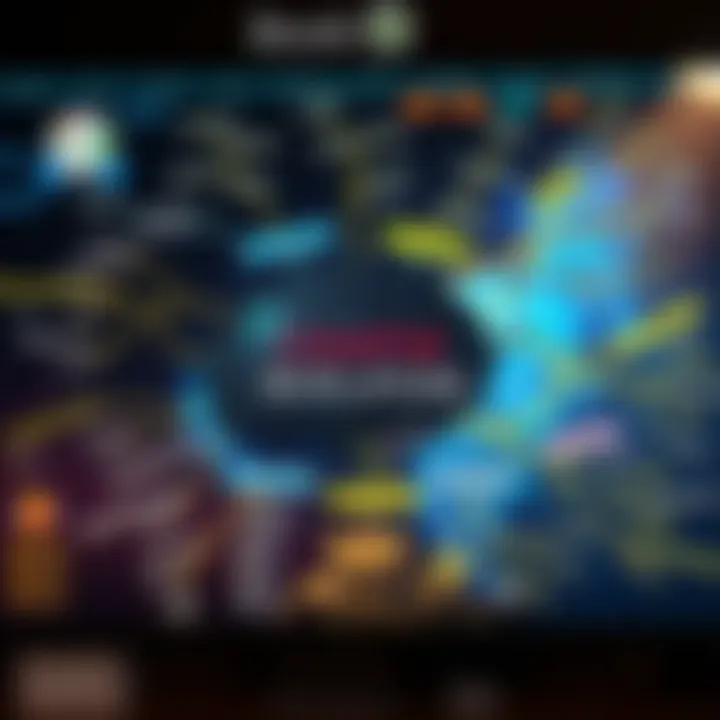
Cultivating a community that values insight can significantly amplify personal growth. Engaging with others who prioritize cognitive exploration fosters a rich environment for discussion and ideation. Networking with insightful individuals can lead to collaborative projects, shared resources, and diverse perspectives, all of which can further enhance personal and collective insights.
Recognizing both the value and the challenge of building such a community is essential. Group dynamics can sometimes veer towards conformity, potentially stifling individual thought. Therefore, it’s vital to foster an atmosphere where everyone’s unique insights are encouraged and celebrated, paving the way for richer dialogues and deeper understanding.
The Future of Insight in a Modern Context
The exploration of insight doesn't end with its traditional definitions or its historical roots. This topic becomes increasingly relevant as we navigate the complexities of modern life, where the integration of technology and artificial intelligence introduces new dimensions to how we generate and harness insights. Understanding the future of insight is essential for individuals seeking personal growth and for professionals aiming to maintain relevance in rapidly evolving fields.
Technological Impact on Insight Generation
The relationship between technology and cognitive insight is profound. Today, technology acts as both a facilitator and a barrier to insight generation. On one hand, digital tools like mind-mapping software or collaborative platforms can stimulate creative thinking by providing unique environments for brainstorming and idea development. Consider platforms such as Miro or Notion, which allow teams to visualize ideas and concepts, fostering a climate of innovation.
However, the incessant flow of information can overwhelm the cognitive capacities necessary for insightful thinking. Individuals may find themselves bombarded with trivial data, making it difficult to discern what truly matters. This paradox highlights the need to develop discernment skills in a tech-driven world, where filtering information is essential for nurturing insights.
- Benefits of Technology:
- Considerations:
- Enhanced collaboration across geographical boundaries.
- Access to diverse tools that aid in creativity.
- Ability to harness vast amounts of data for informed decision-making.
- The risk of information overload.
- Difficulty in establishing focus amidst distractions.
- The chance of losing critical thinking skills due to reliance on technology.
The Role of Artificial Intelligence in Enhancing Insight
Artificial intelligence (AI) is not just a buzzword; it has become a vital cog in the wheel of insight generation. With its capacity to analyze data patterns faster than any human, AI assists in unveiling insights that might be hidden beneath layers of complexity. For instance, machine learning algorithms can sift through massive datasets, identifying trends that might take hours for a professional analyst to uncover.
"AI can illuminate paths in data that we didn’t even know existed."
Additionally, AI-driven analytics tools can provide tailored recommendations, helping individuals personalize their learning and growth paths based on their unique insight profiles. This targeted approach opens doors for more meaningful engagement with the learning material, ultimately leading to deeper understanding and personal transformation.
- Key roles of AI in insight development:
- Accelerating data interpretation processes.
- Offering predictive insights for decision-making.
- Personalizing user experiences in digital learning environments.
Trends in Insight Development for Professionals
As we look ahead, several trends are emerging that will shape how professionals harness insights in their careers. Continuous professional development is no longer a luxury—it's a necessity. In this context, lifelong learning initiatives are replacing outdated paradigms of once-in-a-lifetime education. Keeping abreast of new practices and theories can lead to transformative insights for both individuals and organizations.
Many organizations now encourage their employees to adopt growth mindsets through training and development programs, emphasizing the importance of adaptability and open-mindedness. Furthermore, interdisciplinary collaboration is becoming standard practice, allowing professionals to glean insights from various fields. This approach fosters creativity and innovation by blending different perspectives and expertise.
- Emerging trends to consider:
- Emphasis on interdisciplinary knowledge.
- Adoption of continuous education and skills development.
- Increasingly collaborative work environments fostering diverse thought processes.
In summary, the future of insight is intricately linked to technological advancements, artificial intelligence, and emerging professional trends. Embracing these changes requires a keen understanding of how to navigate them effectively. As we move forward, individuals must cultivate their cognitive skills while leveraging technology to enhance their insight generation.
Finale
The exploration of insight is more than just an academic endeavor; it touches upon the very core of human understanding and personal development. In this final section, we delve into the essence of the findings presented throughout the article, sure to highlight the transformative power of cognitive revelations.
Summary of Key Learnings
Throughout this article, we've uncovered several pivotal factors associated with insight. Here’s a quick roundup:
- Insight Defined: We discovered that insight is not merely a spontaneous thought but a complex cognitive process involving deep understanding and perception shift.
- Neuroscientific Foundations: Key brain structures, like the frontal cortex and temporal lobes, play a significant role in enhancing our ability to attain insights, showcasing how our brain architecture supports our cognitive capacity.
- Learning Environments: It's evident that the right environment fosters insights. Creative spaces, collaboration, and reduced distractions can significantly improve our chances of experiencing those eureka moments.
- Personal Growth: We discussed practical approaches to harnessing insight for self-improvement, emphasizing mindfulness and continuous learning as invaluable tools.
The Importance of Continuous Insight Exploration
The journey of seeking insight should not be seen merely as a destination to reach but as a continuous voyage. Each moment we engage with new ideas or refine our understanding of the world around us, we cultivate a richer cognitive landscape. This ongoing exploration contributes to:
- Adaptability: Embracing change becomes easier when we regularly challenge our thoughts and beliefs, enhancing our resilience in an ever-evolving world.
- Innovation: Continuous insights can drive innovation, allowing professionals and students alike to approach problems from fresh angles, ultimately pushing the boundaries of creativity.
- Personal Fulfillment: Each new insight is a step towards self-discovery, offering deeper satisfaction in both personal and professional realms.
Call to Action for Lifelong Learners
For those passionate about enhancing their insight, a proactive approach is essential. Here are some strategies to keep that flame of curiosity alive:
- Engage with Others: Join discussion groups or study circles. Engaging with diverse perspectives can amplify your insight development.
- Diverse Reading: Explore materials outside your usual genres or fields. This cross-pollination of ideas can spark unexpected insights.
- Practice Reflection: Regularly set aside time to reflect on experiences, thoughts, and feelings. Journaling can be an excellent way to track your insights and identify patterns over time.















